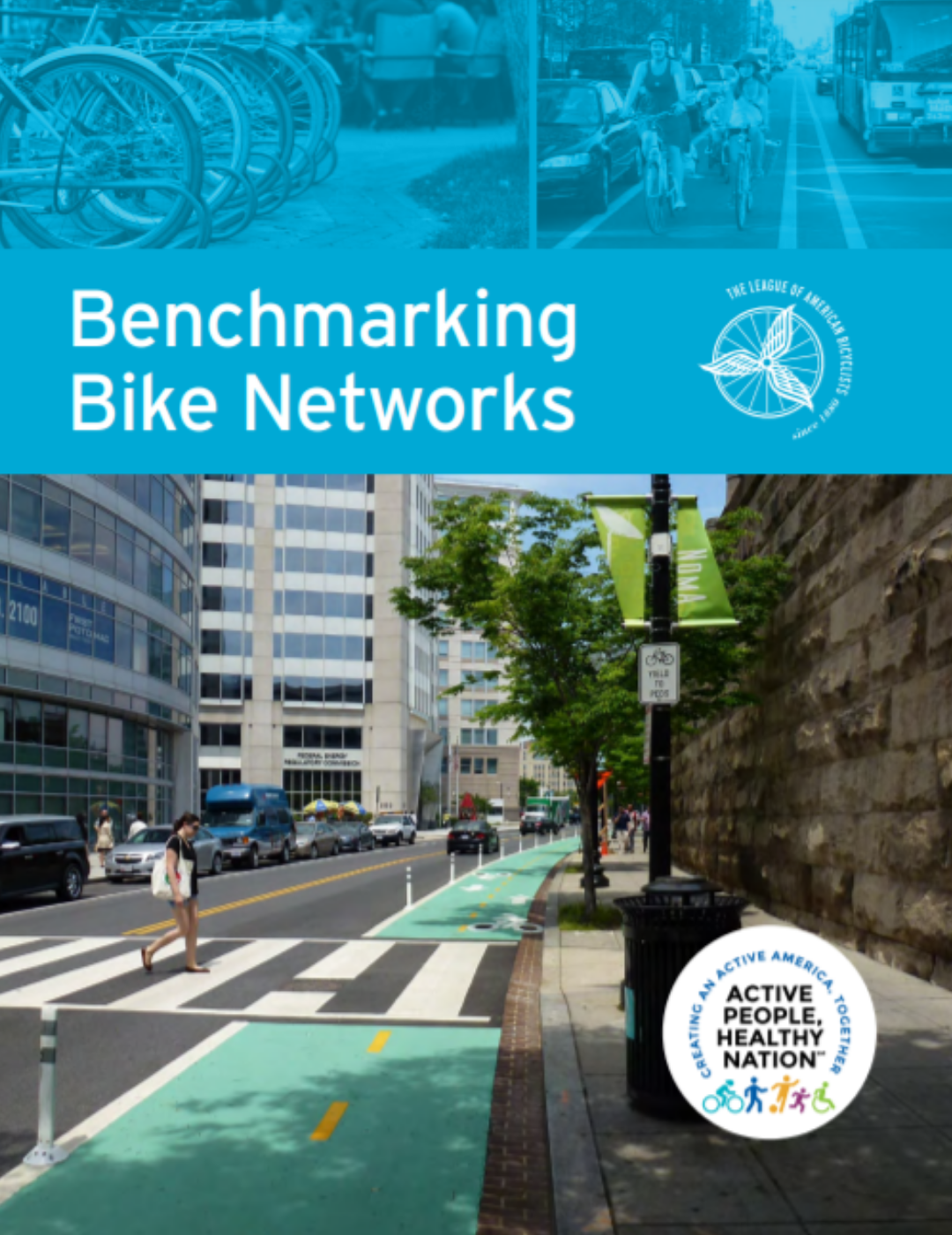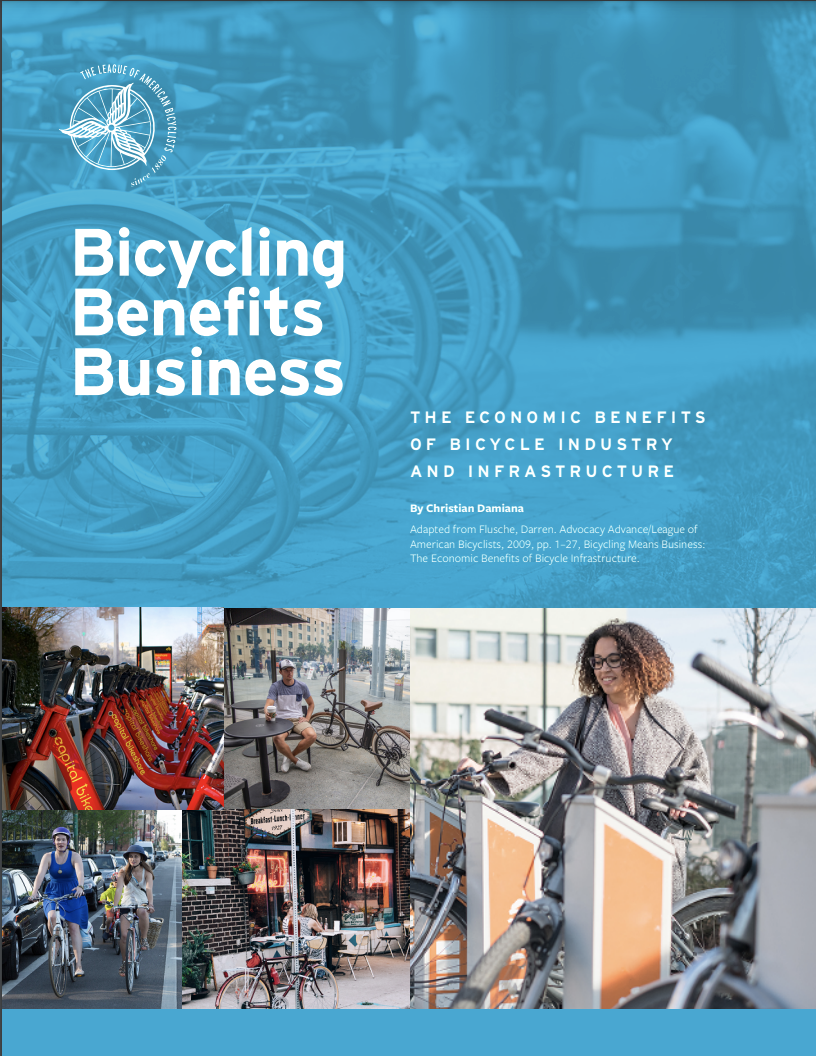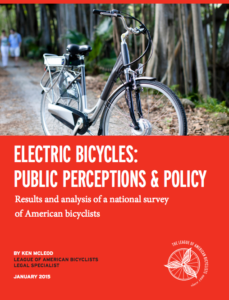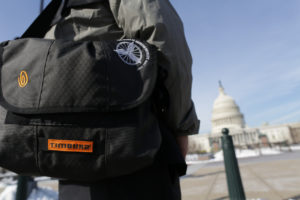Reports and Resources
Convincing decision makers to prioritize people who bike and walk requires two things: great stories and great data. Our reports offer important, easy to understand case studies for both.
As the premier resource for advocates and policy makers on how to make biking better, the League has produced scores of reports and fact sheets over the years to make the case for building a Bicycle Friendly America for everyone.
In addition to our most recent reports, the League also hosts archives and resources created over the years through our work and that of our partners.
Can't find a report you're searching for? Contact us.
Recent Reports
Recent Posts from our Research Team
Creating Resilience Through Biking & Housing
In our Winter 2015 American Bicyclist magazine, we spoke with Harriet Tregoning, the Director of the Office of Economic Resilience at the U.S. Department of Housing and Urban Development and a daily bike commuter, about the intersection of active transportation and affordable housing. This is our full interview, which was condensed for length in the magazine. It’s Harriet Tregoning’s job to create opportunity. A bike commuter, Tregoning is the new Director of the Office of Economic Resilience at the U.S. Department of Housing and Urban Development. She comes to HUD after most recently serving as the director of the District of Columbia’s Office of Planning, spearheading several projects, including the implementation of the city’s bikeshare system. In her new role, Tregoning said her boss, HUD Secretary Julian Castro, likes to say HUD is the “department of opportunity.”
E-Bikes: Public Perceptions & Policy
Last fall we asked League members and others on social media for their thoughts about electric bicycles. We received over 700 responses and learned a lot in the process. In our new report, “Electric Bicycles: Public Perceptions & Policy,” we examine your responses and what they might mean for the League’s position on electric bicycles and the ways in which electric bicycles might impact our mission to create a bicycle friendly America for everyone. Electric bicycles offer an option that allows more people to use bicycles in more situations. Previous research from Portland State University found that 60% of electric bicycle riders surveyed bought an electric bicycle to enable trips in hilly areas and 73% rode to different destinations than with a standard bicycle. 65% of respondents in that survey said replacing car trips was a main reason to get an electric bicycle.
2014 Recap: Biking & Federal Policy
We’re ending 2014 with a big win for bicycling: a national goal to reduce bicyclist and pedestrian fatalities — an effort we’ve been championing for two years. Success in Washington is rarely immediate, as evidenced in this most recent development. It’s best measured in small milestones, as well as in the big wins. With that in mind, there are a number of milestones that we hope to build on in the 114th Congress.
Election Analysis: What’s Next for Biking?
The Nov. 4 midterm election saw a major shake up in Congress — and there are still several local, state and federal run-off elections looming in its wake. Earlier this month, I discussed what these results mean for biking at the state and federal levels. So what’s next? Here are the key takeaways from this month’s elections — and what to watch for in the next several months.
Speedy Road Design Undermines Safety
This guest post comes to us from Chris McCahill, a senior associate with the State Smart Transportation Initiative. Despite gradual improvements, the U.S. is falling behind its peers in terms of traffic safety. Making matters worse, our nation’s most vulnerable road users—pedestrians and cyclists—make up a growing share of traffic fatalities in recent years. In response, the U.S. DOT has made bicycle and pedestrian safety a high priority, state laws are beginning to address the needs of non-motorized road users, and many cities are installing new bike facilities and stepping up traffic enforcement.
Bike Researchers: Safety Report ‘Misleading’
Their claim that bicycling has become much more dangerous is based on only data from 2010 to 2012 and is extremely misleading. Using official data from the US Department of Transportation, the total number of bike trips more than tripled from 1,272 million in 1977 to 4,081 million in 2009. During the same period, the number of cyclist fatalities fell from 922 in 1977 to 628 in 2009, a decrease of 32%. Taking into account the increased level of cycling, the cyclist fatality rate fell by a dramatic 79%. In short, cycling has become roughly four times safer per bike trip over the past three decades.








